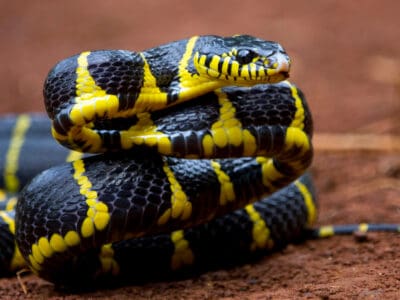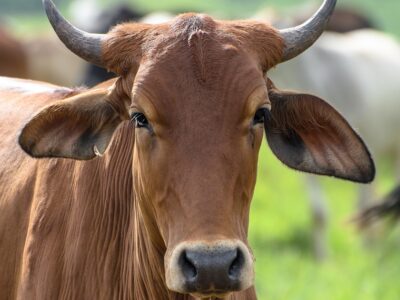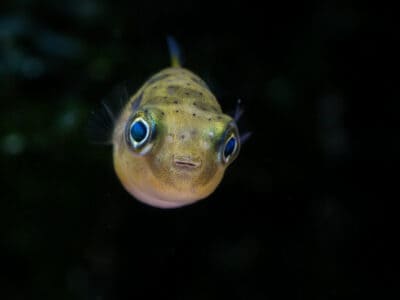Below you can find a complete list of animals in India. We currently track 341 animals in India and are adding more every day!
In terms of its size, population, and even wildlife, India is a land of incredible extremes. Some of the largest (and even some of the smallest) wildlife on the planet can be found across India’s vast array of rich mountains, verdant grasslands, luscious tropical jungles and forests, dense wetlands, and arid deserts.
The country’s most prominent regions include the Himalayas, the Indo-Gangetic plain (named after the two northern rivers against which it’s bound), the Western Ghats mountain range, and the Deccan Plateau toward the south.
The Official National (State) Animals in India
As a symbol of strength and power, the Bengal tiger is the official national animal of India. Other important symbols include the Indian elephant and the Indian peacock, which is the national bird of India, symbolizing royalty and good luck.
The Bengal Tiger was not always the national animal of India. In fact, prior to 1973, it was the lion. Why did it change? Bengal tigers had large populations in India prior to 1900. But between 1900-1973, their numbers fell drastically due to poaching. In an effort to bring its numbers back, Project Tiger was launched in April 1973, and as a springboard, the Bengal Tiger was declared the national animal of India. The Indian Peacock is the national bird of India, symbolizing royalty and luck. ©Kandarp/Shutterstock.com
Where to Find the Top Wild Animals
Many people automatically think of the continent of Africa as the go-to place for safaris. But the country of India features a rich habitat for wild animals to thrive, and since 1972, efforts have been made not only in the area of conservation but also to build on India’s reputation as a great wildlife safari destination.
The state of India has set aside 500+ wildlife sanctuaries which cover over 74,425 square miles and a hundred national parks to protect its wildlife. The largest and most popular parks are listed below:
- The Nagarahole National Park, located in the southern state of Karnataka, is one of the premier destinations in India. The lush forests, jungles, and marshlands are home to tigers, crocodiles, elephants, and aquatic birds.
- The Kaziranga National Park, located on the floodplains of the Brahmaputra River in the northeast state of Assam, contains buffalo, deer, river dolphins, tigers, and most of the world’s remaining rhinos.
- The Keoladeo National Park in the northern state of Rajasthan, which contains savannas and wetlands, is an ideal haven for migrating birds from Afghanistan, Turkmenistan, China, and Siberia.
- The Satpura National Park, located in the central highlands of Madhya Pradesh, is exceptionally rich in deer, including the Indian muntjacs, spotted chital, sambars, and blackbucks.
- If you’re interested in exploring the riches of India’s marine wildlife, then you might want to check out the Mahatma Gandhi Marine National Park. Located near the remote Andaman Islands of the Indian Ocean, the park features plenty of fish, manta rays, and aquatic birds living around the coral reefs.
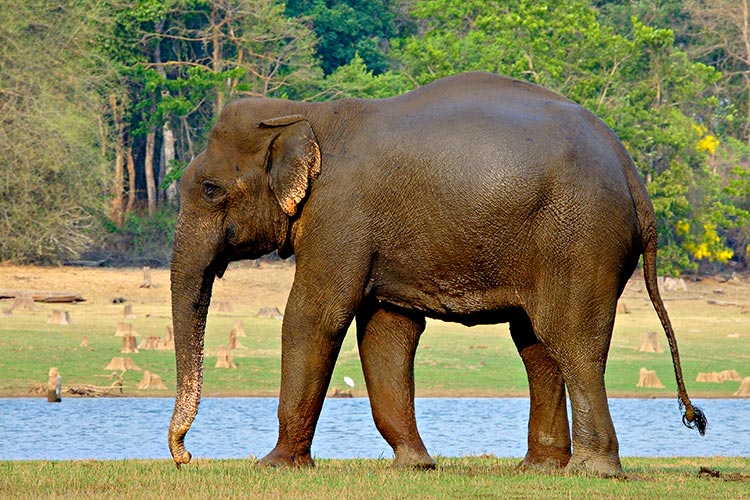
The Nagarahole National Park in the southern state of Karnataka, India is a popular place to see wildlife like the Indian elephant.
The Most Dangerous Animals in India Today
India is home to a number of dangerous animals. While some wild animals are dangerous by sheer size, strength, predatory skills, or deadly venom, others are dangerous for different reasons. Unfortunately, India is a place where its inhabitants can become victims of wild animal attacks on a daily basis. Surprisingly, one study conducted between April 2016 – March 2017 revealed that of a total of 7,556 deaths due to animal attacks, 80% of those deaths were attributed to dog bites (whether the deaths were because of the attacks or as a result of contracting rabies from the dogs is not clear). 5% of the deaths came from snake bites, 3% from monkey attacks and the rest included attacks from wild boars, tigers, leopards, jackals, elephants, etc. There were even cases of deaths from domestic bull or cattle attacks and rat bites.
In general, these animal species are highly dangerous and responsible for many of the deaths of humans in India:
- King Cobra – Native to the forests and jungles of eastern India, the king cobra can deliver a powerful toxin that affects the victim’s central nervous system. Symptoms include pain, vertigo, and even paralysis. Death can sometimes occur in as little as 30 minutes.
- Saltwater Crocodile – As the largest living reptile in the world, the saltwater crocodile can grow up to 20 feet long. Its world-class bite and tendency to treat humans as prey mean that this crocodile should be avoided at all costs. Unfortunately, many people who wander into their territory every year are vulnerable to attack.
- Russell’s Viper – As one of the most dangerous and fearsome snakes in the world, Russell’s viper causes thousands of death every year. Symptoms of its bite include pain, swelling, dizziness, vomiting, and even kidney failure. Since it feeds on rodents and lizards, this snake will often wander into human territory.
- Indian Red Scorpion – The toxin of this scorpion will attack the cardiovascular and pulmonary systems, causing a surprisingly high incidence of death. Symptoms can include vomiting, sweating, pain, convulsions, breathlessness, and an abnormal heart rate.

Rusell’s vipers have a mortality rate of around 2.6% in India.
©jaroslava V/Shutterstock.com
Endangered Animals in India
India contains some of the largest and most unique wildlife on the planet, but a lot of this diversity is now in danger of becoming extinct from human activity. There are multiple animals that are endangered, some being the snow leopard, the Nilgiri tahr, the Kashmiri red stag, the blackbuck, and the one-horned rhino.
Below is a list of other endangered Indian animals with greater details of their plight:
- Indian Elephant – This subspecies of the Asian elephant is endemic to grasslands and forests throughout South Asia. But as habitat loss has gnawed away at the elephant’s natural territory, the numbers have fallen precipitously. Only about 30,000 of them still remain in India.
- Bengal Tiger – This subspecies of the tiger once roamed the forests, grasslands, and mangroves of India in much larger numbers. But poaching and habitat loss have caused numbers to decline, so it’s now classified as endangered. Only about 2,000 of them remain in India out of a total population of about 3,000 throughout the larger region.
- Dhole – Also known as the Asian wild dog, this close relative of the wolf is endemic to mountains and alpine forests, and meadows. Like the wolf, it was deliberately persecuted by humans both for sport and to prevent them from killing livestock. It’s now extinct from large parts of its former territory.
- Asiatic Lion – This subspecies of the lion are less well-known than its African brethren. It once inhabited a huge swath of territory across Western Asia, but as a result of deliberate hunting and some habitat loss, this species is now restricted to the Indian state of Gujarat in the western part of the country.
- Indian Vulture – The Indian vulture experienced a sharp and sudden decline between 2000 and 2007 due to kidney failure from the accidental ingestion of pharmacological drugs that are usually administered to livestock. Because vultures help keep the environment free of carcasses, their decline has caused disease to spread more rapidly. Conservationists are attempting to breed them in captivity, but their slow reproduction is a hindrance to their rehabilitation. It’s now in danger of becoming extinct.
- Lion-tailed Macaque – This endangered Old World monkey, which sports an elegant silver-white mane and long tufted tail, is endemic to the Western Ghats mountain range of South India. Only a few thousand remain in the wild.
- South Asian River Dolphin – This freshwater dolphin species is endemic to the Indus River of Pakistan and the Ganges River of India, Nepal, and Bangladesh. It is estimated that less than 5,000 remain, possibly due to pollution, dam construction, and other habitat changes.
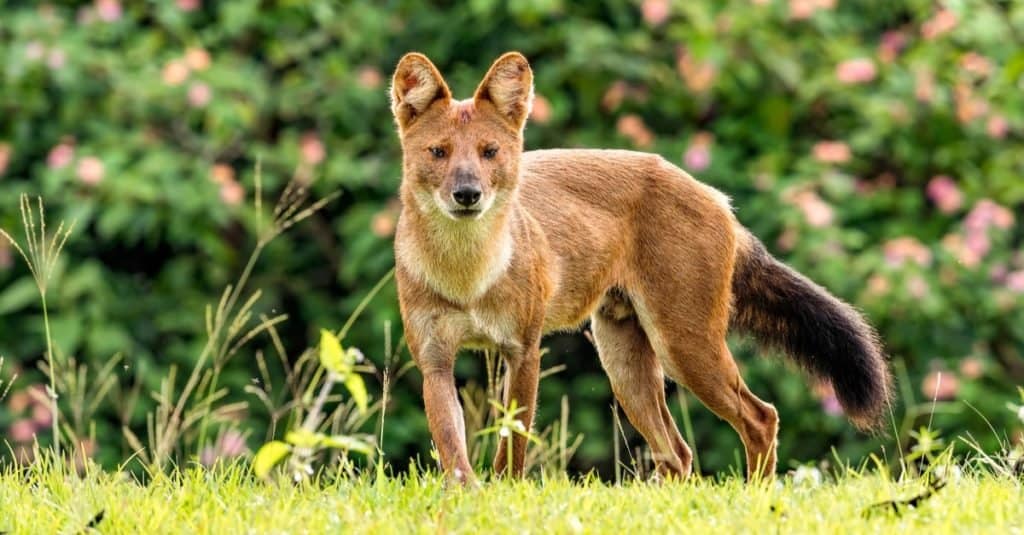
The dhole, persecuted by humans both for sport and to prevent them from killing livestock, is now extinct from much of its former Indian territory.
©Nimit Virdi/Shutterstock.com
Types of Birds in India
Around 1,300 species of birds are native to India, 80 of which are endemic. The Ranganathittu Bird Sanctuary is the largest bird sanctuary in the state of Karnataka, and one of India’s best birding locations.
You’ll find a wide variety of birds including pied kingfishers, long-legged spoonbills, spotted owls, and painted storks. You can see resident birds year-round, or many species of migratory birds utilizing the sanctuary. The best time to see both resident and migratory birds are November to February.
The Bharatpur bird sanctuary, also known as Keoladeo National park, is famous for bird watching. Over 360 species of birds inhabit this sanctuary’s woodlands, grasslands, swamps, and wetlands. It is famous for critically endangered Siberian cranes. You can also find Indian peafowls, flamingos, pelicans, vultures, Indian grey hornbills, and so much more.
The best time to see resident and migratory birds is between October to March.
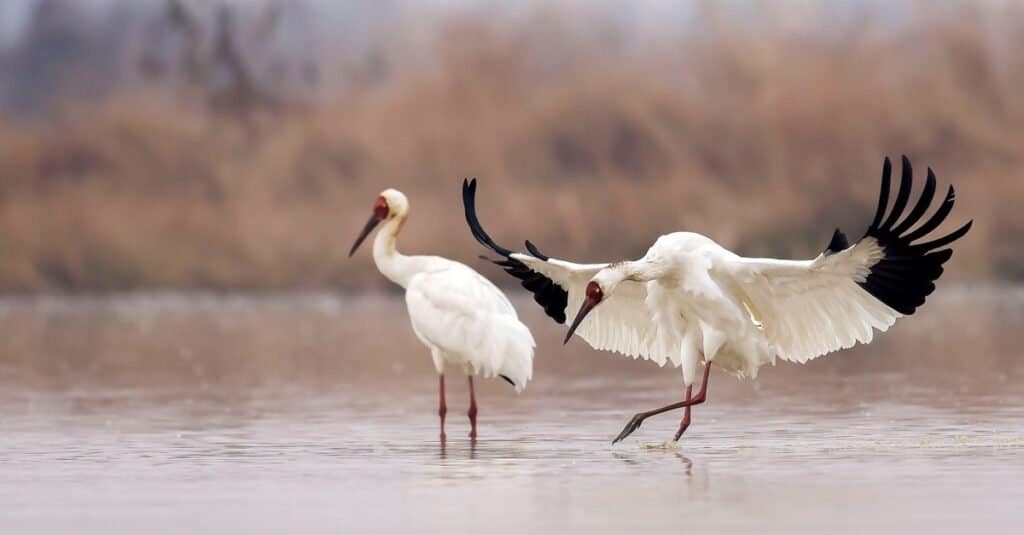
The Bharatpur bird sanctuary, also known as Keoladeo National Park, is home to many endangered bird species like Siberian Cranes.
©Wang LiQiang/Shutterstock.com
Snakes Native to India
There are 60 species of venomous snakes in India. It is famously home to a group of venomous snakes known as “The Big Four”. The Indian cobra, Russell’s viper, common krait, and saw-scaled viper are responsible for the deadliest snake bites in the country. Experts have recently included a fifth venomous snake that contributes to the most mortality rates, the hump-nosed pit viper.
There are many types of snakes in India’s diverse habitats other than The Big Four. Other popular animals in India include:
- Indian Rat Snake: Also known as the Oriental rat snake, they are common in a wide range of habitats throughout India. These semiarboreal snakes are long and slender.
- King Cobra: The longest venomous snake in the world, reaching lengths of up to 18 feet long. They are found in Northern India in forests and agricultural areas.
- Indian Python: They go by several common names, including black-tailed python, Indian rock python, and Asian rock python. These non-venomous snakes live in a variety of tropical habitats in India.
- Checkered Keelback: Aggressive semi-aquatic snakes found near freshwater sources.
- Brahminy Blind Snake: The smallest snake in India, and one of the smallest in the world. They live underground and are similar in appearance to earthworms.

The venomous King Cobra is a native snake species of India.
©RealityImages/Shutterstock.com
The 6 Largest Animals Indian Animals
India is home to some truly large animals. Below is a list of the largest land animals you’ll find in India.
- Indian Elephant: Height up to 10 ft, weight up to 11,000 lbs
- Greater One-Horned Rhinoceros Up to 6.6 feet in length, weight up to 6,600 lbs
- Gaur (Indian Bison): Up to 10’10” in length, weight up to 3,300 lbs
- Bengal Tiger: Up to 10 ft long, weight up to 660 lbs
- Nilgai: Height up to 5ft., weight up to 634 lbs
- Asiatic Lion: Up to 10 ft long, weight up to 440 lbs
- Saltwater Crocodile: Length up to 23 ft, weight up to 2,200 lbs
The 6 Rarest Indian Animals
If you were to travel to India, you may want to put these rare animals on your bucket list to seek out at a wildlife sanctuary or on a safari.
- Red Panda: This bamboo-loving animal inhabits temperate forests in the Himalayas at altitudes between 1,800 and 4,000 meters. It has fiery red fur and resembles a raccoon more than a panda in its features.
- Asiatic Lion: This species of lion only numbers 600 in the wild, isolated in the Gir Forest of Western India, their last remaining natural habitat.
- Nilgiri Tahr: This goat species is not only rare to see in the wild–it’s also the state animal in the Indian state of Tamil Nadu.
- Snow Leopard: The snow leopard sports one of the most beautiful coats of any member of the cat family, and well worth viewing. A couple of places for viewing are Dibang Wildlife Sanctuary (Arunachal Pradesh), Himalayan National Park (Himachal Pradesh), and Nanda Devi National Park (Uttarakhand).
- Black Buck: Another state animal (of Punjab, Haryana and Andhra Pradesh) is the Black Buck, also known as the Indian antelope. It sports spiraling horns and unique colorations–a site to behold.
- Great Indian Bustard: This would be one of the rarest birds to see in India, as there’s only 150 recorded left in the wild there. They prefer a dry, grassland habitat, and are endangered due to that habitat loss.
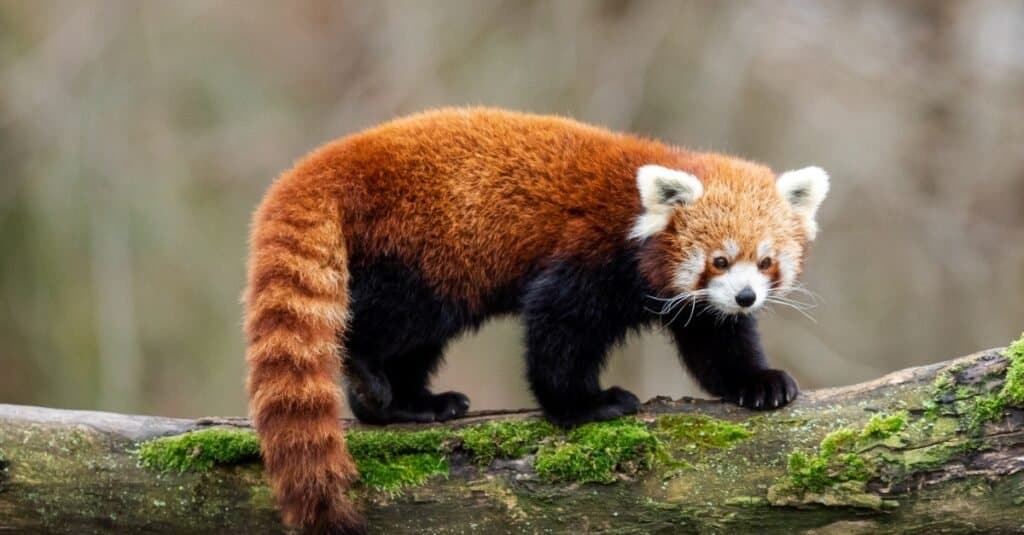
The red panda is a rare Indian animal native to the Himalayas.
©iStock.com/AB Photography
National Parks in India
Are you looking for an adventurous way to explore the country? Check out the many beautiful national parks in India! Discover dozens of Bengal tiger reserves, traverse areas that inspired The Jungle Book, and relax at luxury resorts near lush jungles.
More on Animals in India
Indian Animals

Adélie Penguin
Eats up to 2kg of food per day!

Admiral Butterfly
Stunningly beautiful wings
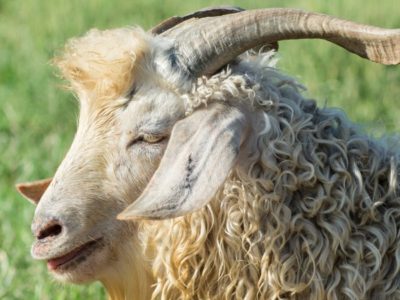
Angora Goat
Each adult Angora goat produces about 12 inches of mohair annually while kids have about 8 inches.

Ant
First evolved 100 million years ago!

Antelope
Renew their horns every year!

Archerfish
Archerfish can shoot a stream of water up to five feet with amazing accuracy.

Armyworm
They are so named because they "march" in armies of worms from one crop to another in search of food
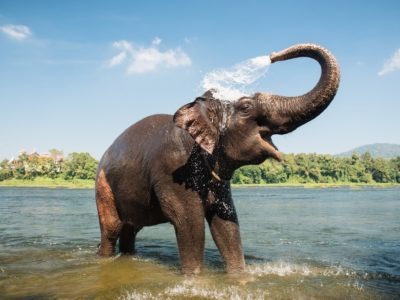
Asian Elephant
Domesticated for hundreds of years!
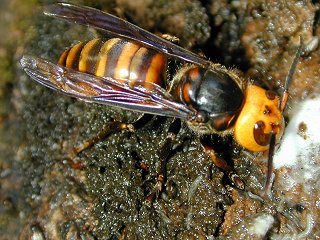
Asian Giant Hornet
The largest wasp in the world!
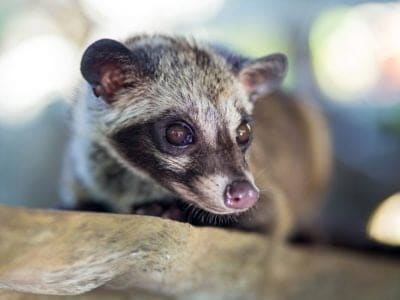
Asian Palm Civet
It mainly eats mangos and coffee!

Asiatic Black Bear
Known to eat 160 different tree-borne fruits in Thailand!
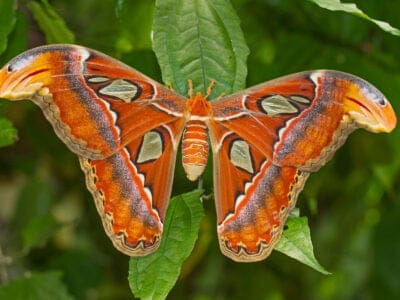
Atlas Moth
Adult atlas moths do not eat - they live off fat they stored as larvae.

Aurochs
Extinct ancestor of all domesticated cattle!

Avocet
Has a curved, upturned beak!

Bamboo Rat
They make a "boop, boop, boop" sound when danger draws near their burrow.

Banana Spider
People spin clothing and fishing nets out of these spiders’ silk.

Banded Krait
What often prevents more people from falling victim is that the banded krait does not always inject venom in a defensive bite. It saves the venom for hunting prey instead.

Barb
There are over 1768 known species!

Barn Owl
Found everywhere around the world!

Barn Swallow
Older offspring help care for new hatchlings.

Bat
Detects prey using echolocation!
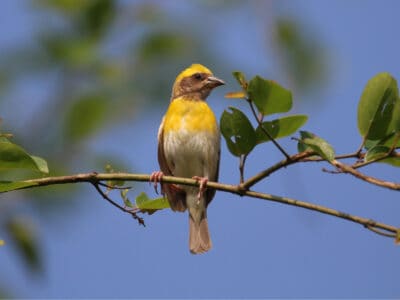
Baya
The baya constructs a massive nest out of plant fibers

Bear
There are 8 different species!
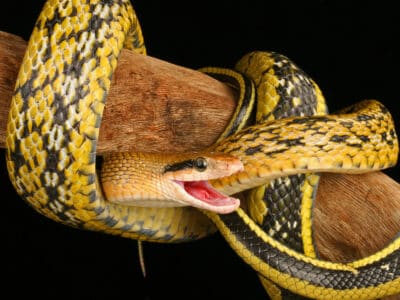
Beauty rat snake
Beauty Rat Snakes are relatively harmless if left undisturbed, only attempting to bite out of fear.

Bed Bugs
Bed bugs feed for 4-12 minutes.

Bee
Rock paintings of bees date back 15,000 years
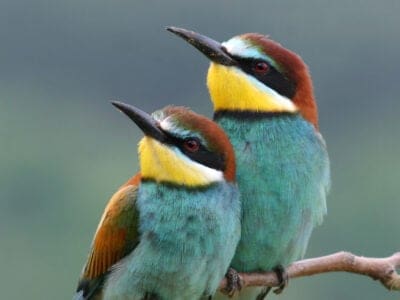
Bee-Eater
They roll around in dirt to prevent external parasites

Beetle
There are more than 350,000 different species

Beewolf wasp
They hunt bees
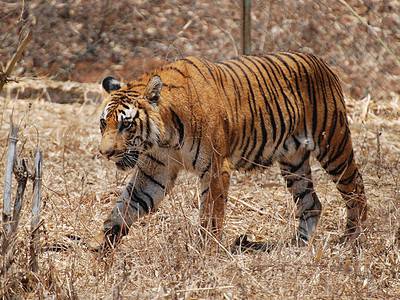
Bengal Tiger
The most numerous species of tiger!
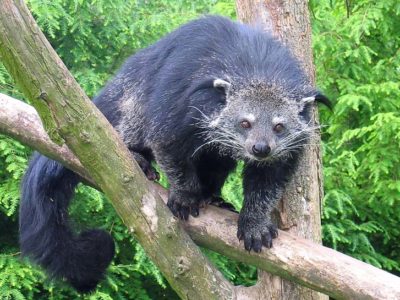
Binturong
Also known as the Asian Bearcat!

Bird
Not all birds are able to fly!

Biscuit Beetle
The biscuit beetle form a symbiotic relationship with yeast

Black Widow Spider
They typically prey on insects!
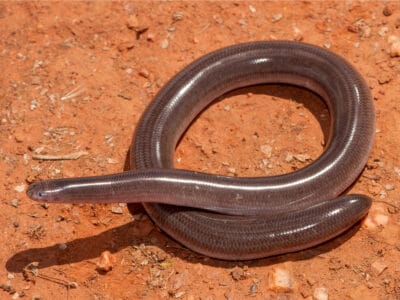
Blind Snake
The blind snake is often mistaken for a worm.

Blue Dragon Sea Slug
They inflict a painful, venomous sting
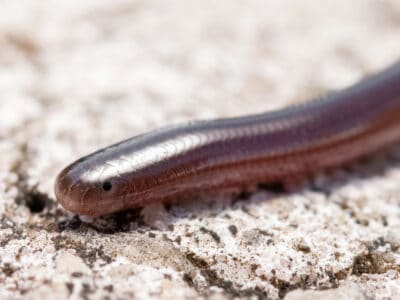
Brahminy Blindsnake
These snakes have been introduced to all continents, except Antarctica!

Brazilian Treehopper
“Mild-Mannered Minimonsters”
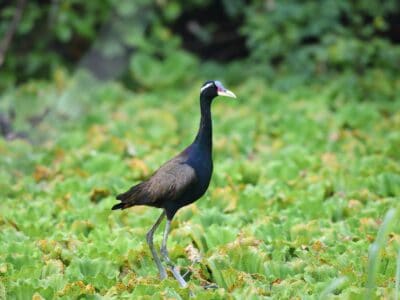
Bronze-winged Jacana
Fathers pick up their young and carry them under their wings

Brown Dog Tick
Can live its entire life indoors

Bumblebee
The most common species of bee!
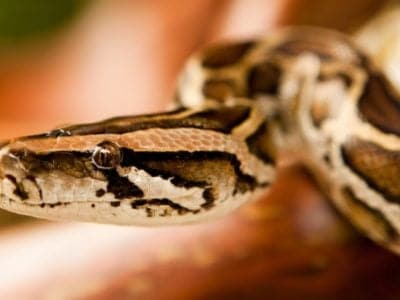
Burmese Python
These snakes can swallow their prey as whole.

Butterfly
There are thought to be up 17,500 species!

Caecilian
Some species' babies use their hooked or scraper-like teeth to peel off and eat their mother's skin
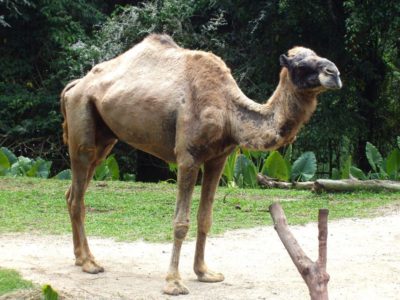
Camel
Can survive without water for 10 months!

Camel Cricket
The camel crickets that are found in the USA are light brown in color. They also have dark streaks all over their body.

Caracal
Has 20 different muscles in it's ears!

Carpenter Ant
Carpenter ants can lift up to seven times their own weight with their teeth!
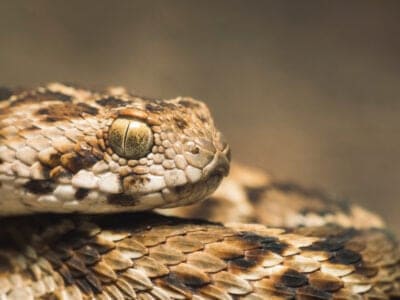
Carpet Viper
The Carpet Viper probably bites and kills more people than any other species of snake.
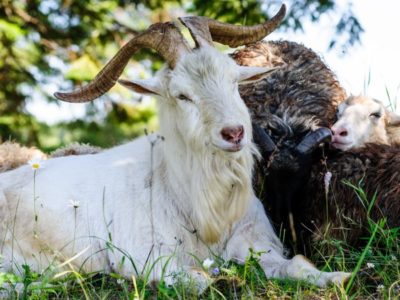
Cashmere Goat
Cashmere goat are named after Kashmir regions of India and Pakistan

Cat
May have been domesticated up to 10,000 years ago.

Caterpillar
The larvae of a moth or butterfly!

Catfish
There are nearly 3,000 different species!

Centipede
There are about 3,000 documented species!
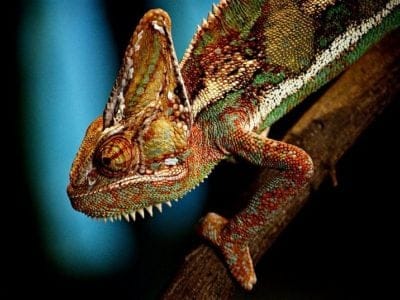
Chameleon
There are more than 160 different species!

Chicken
First domesticated more than 10,000 years ago!
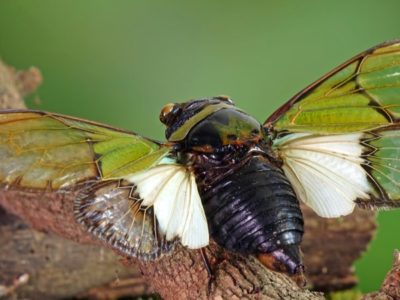
Cicada
Cicadas have one of the longest insect lifespans
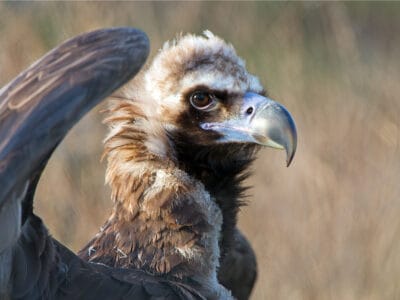
Cinereous Vulture
This vulture can fly at great heights. At least one was found a few thousand feet from the top of Mount Everest.
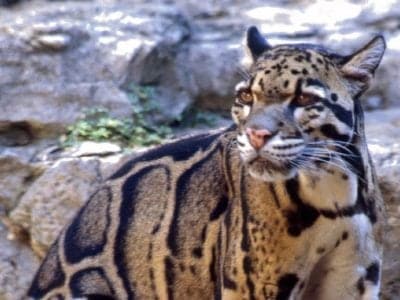
Clouded Leopard
Has canines that can be two inches long!

Cockroach
Dated to be around 300 million years old!

Coconut Crab
The largest terrestrial arthropod in the world

Codling Moth
Pupae are able to undergo diapause to survive poor fruit yield years and winter.

Common Buzzard
The most common raptor in the UK!

Common Furniture Beetle
The common furniture beetle feeds exclusively on wood
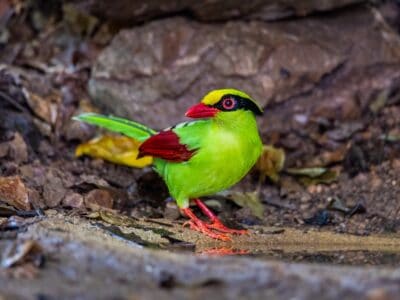
Common Green Magpie
Magpies are aggressive when threatened, often “dive-bombing” at intruders

Common House Spider
House spiders have the ability to eat most insects in a home.

Common Raven
A group of ravens is called an unkindness or a conspiracy.

Coral Snake
There are over 80 species of coral snake worldwide.

Cormorant
They can fly 35 mph and dive 150 feet below water.
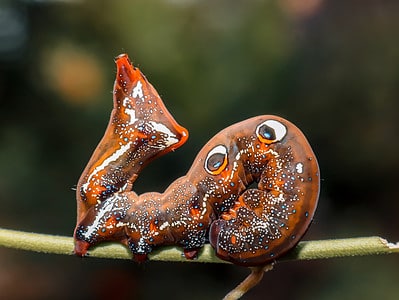
Cosmic Caterpillar
Cosmic caterpillars have spots on their back that look like eyes to scare off predators.

Cow
There are nearly 1.5 billion worldwide!

Cow Reticulated Python
Cow reticulated pythons hatch solid white, then develop spots as they mature.

Crab
There are 93 different crab groups

Crab Spider
Crab Spiders can mimic ants or bird droppings

Crane
Many are critically endangered species!

Cricket
Male crickets can produce sounds by rubbing their wings together

Crocodile
Have changed little in 200 million years!

Crocodylomorph
Crocodylomorphs include extinct ancient species as well as 26 living species today.

Crow
A group of these birds is called a Murder.

Danios
These fish make a popular choice for aquarium hobbyists due to their hardy nature.

Deer
There are around 40 different species!
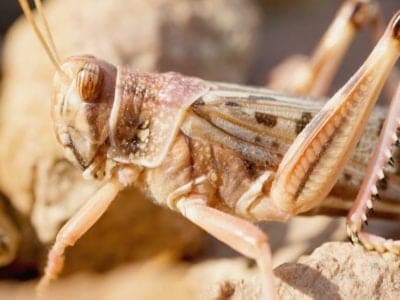
Desert Locust
Solitary locusts are grey while gregarious locusts are yellow with stripes.
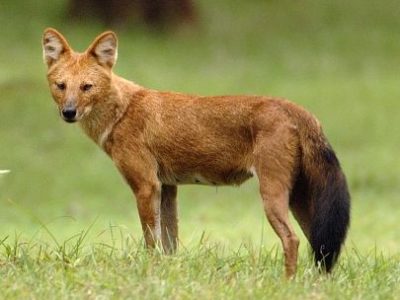
Dhole
Only 2,000 left in the wild!

Dog
First domesticated in South-East Asia!

Dog Tick
Dog ticks feed on dogs and other mammals

Donkey
First domesticated 5,000 years ago!
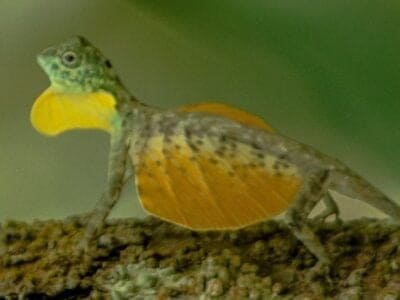
Draco Volans Lizard
Beneath the lizard’s “wings” are a pair of enlarged ribs for support.

Dragonfly
It's larvae are carnivorous!

Duck
Rows of tiny plates line their teeth!

Dung Beetle
The dung beetle can push objects many times its own weight

Dwarf Gourami
Dwarf gourami can live for over four years with proper care.

Eagle
Has exceptional eyesight!

Earthworm
They are hermaphrodites, which means they have male and female organs

Earwig
There are nearly 2,000 different species!

Eel
Eels can be a mere few inches long to 13 feet!
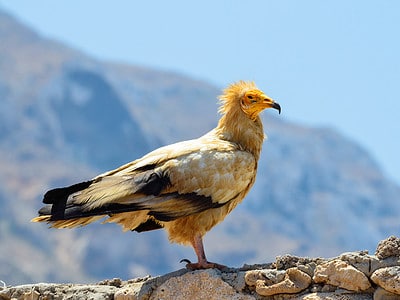
Egyptian Vulture
They steal large ostrich eggs and use rocks and pebbles to crack the shells.

Elephant
Spends around 22 hours a day eating!

Eurasian Eagle-owl
The Eurasian Eagle-owl is the second largest owl in the world with a wingspan up to six feet!
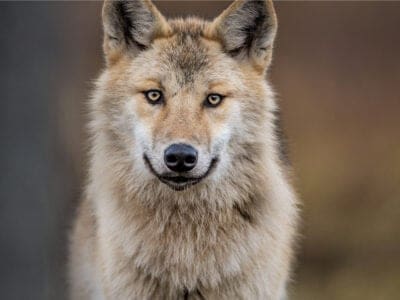
Eurasian Wolf
Coloring depends on location.
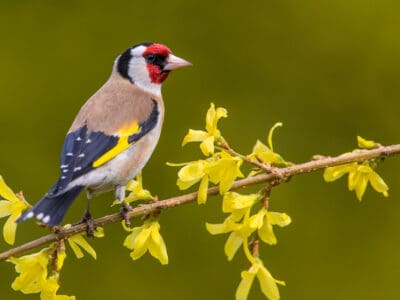
European Goldfinch
They are frequent visitors to backyard feeders, especially those containing niger seeds.

Falcon
The fastest creatures on the planet!

False Widow Spider
False spiders actually prey on black widow spiders and other hazardous spiders
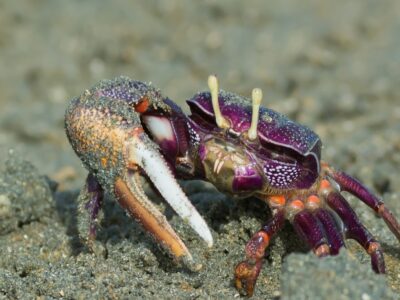
Fiddler Crab
The fiddler crab gets its name from the motion the males make with their over-sized claw during the mating ritual.
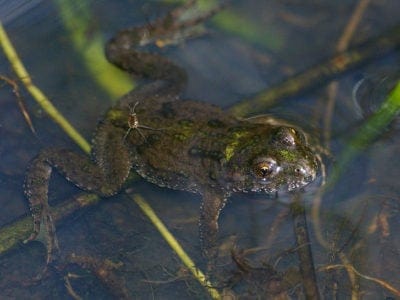
Fire-Bellied Toad
Found across mainland Europe and Asia!

Firefly
The firefly produces some of the most efficient light in the world
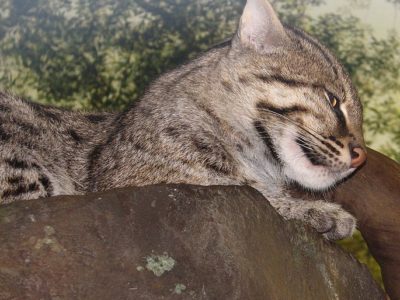
Fishing Cat
Scoops fish out of the water using it's paw!

Flamingo
Sleeps on just one leg!

Flea
Adult fleas can jump up to 7 inches in the air

Flowerhorn Fish
The Flowerhorn fish is an artificial species; it does not exist naturally

Fly
There are more than 240,000 different species!
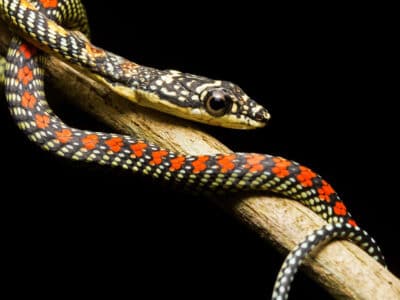
Flying Snake
Flying snakes are the only gliding limbless vertebrates or animals with a backbone!

Flying Squirrel
Can glide up to 90 meters!

Fox
Only 12 species are considered "true foxes"

Frog
There are around 7,000 different species!
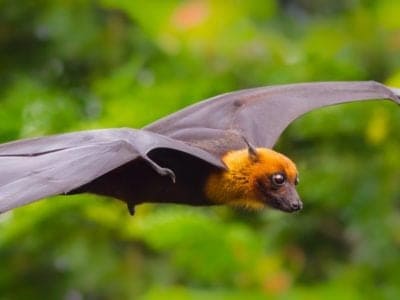
Fruit Bat
Among the largest bats in the world

Fruit Fly
Fruit flies are among the most common research animals in the world
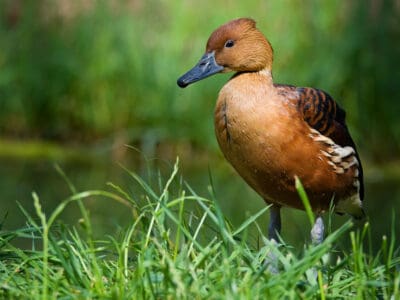
Fulvous Whistling Duck
They build a ramp from their nest, which leads to a nearby water source
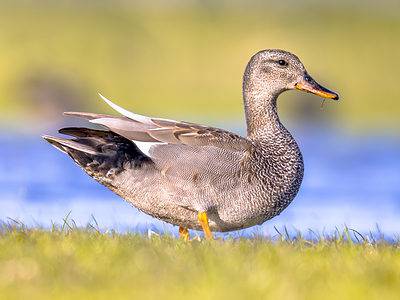
Gadwall
They make many sounds when trying to attract a mate.

Gazelle
Named for the Arabic word for love poems

Gecko
There are thought to be over 2,000 species!

Gerbil
Originally known as the Desert Rat!

German Cockroach
The most common type of urban roach

Gharial
Males can blow bubbles using the bump on their snout!

Giant Trevally
The largest fish in its genus

Gibbon
Found in dense jungles and tropical forests!

Glass Lizard
Can grow up to 4ft long!

Glowworm
Found inhabiting dense woodland and caves!

Gnat
Males form large mating swarms at dusk

Goat
Most closely related to the Sheep!

Golden Eagle
Their calls sound like high-pitched screams, but they are quiet most of the time.

Golden Oriole
Migrates between Europe and Asia!
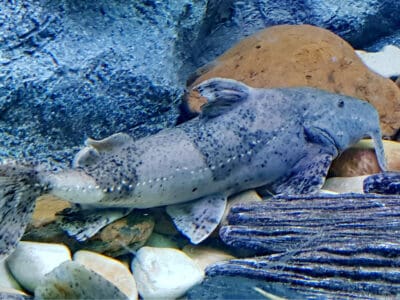
Goonch Catfish
The goonch catfish, or giant devil catfish, is one of the most fierce freshwater fish.

Goose
There are 29 different species!

Gooty Sapphire Tarantula
They can run up a tree trunk surprisingly fast.

Grasshopper
There are 11,000 known species!

Green Bee-Eater
Mainly eats honeybees!

Grey Heron
Male grey herons are picky about their mates. They'll reject a female that they don't fancy.
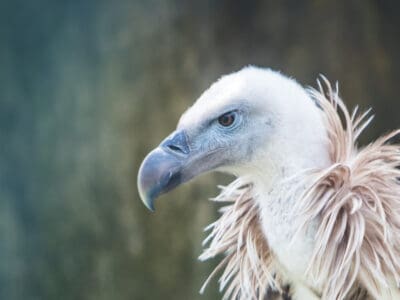
Griffon Vulture
Can spot a dead animal from thousands of feet away

Gypsy Moth
One of the most invasive species in the world

Hamster
Able to run as quickly backwards as forwards!

Hare
Can reach speeds of over 50 mph!

Hawk Moth Caterpillar
Many hawk moth caterpillars eat toxins from plants, but don’t sequester them the way milkweed butterflies do. Most toxins are excreted.

Hedgehog
Thought to be one of the oldest mammals on Earth!

Heron
Inhabits wetlands around the world!
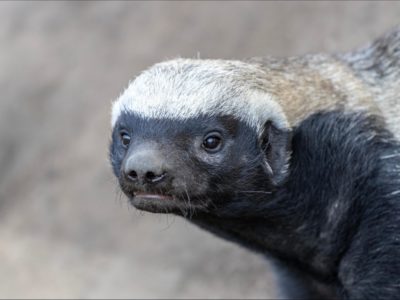
Honey Badger
One of earth's bravest creatures!

Honey Bee
There are only 8 recognized species!

Hoopoe
Stunning bird with a stinky way to deter predators!
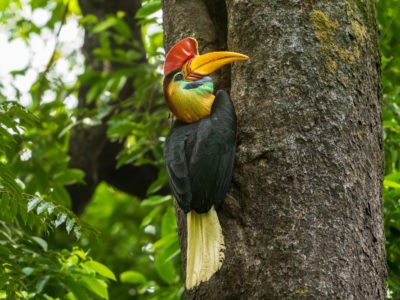
Hornbill
The bird has a massive horn on its bill!

Horse
Has evolved over 50 million years!

Horsefly
Horseflies have been seen performing Immelmann turns, much like fighter jets.

Horseshoe Crab
Changed little in over 500 million years!

Housefly
The fly has no teeth

Human
Thought to have orignated 200,000 years ago!

Huntsman Spider
Some huntsman spiders have an interesting way of moving around. Some cartwheel while others do handsprings or backflips.
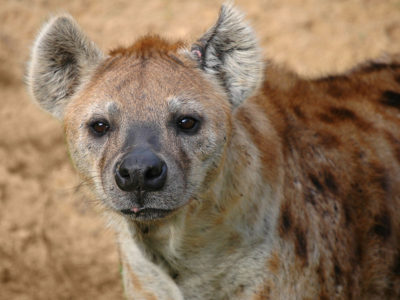
Hyena
There are four different species!

Ibis
Found in swamps, marshes and wetlands!

Indian Cobra
One of the Big Four.

Indian Elephant
Found throughout south-east Asia!
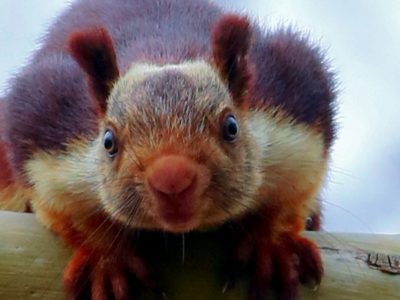
Indian Giant Squirrel
Indian giant squirrels use their large tail to help them balance.

Indian Palm Squirrel
Natively found in parts of India and Sri Lanka!
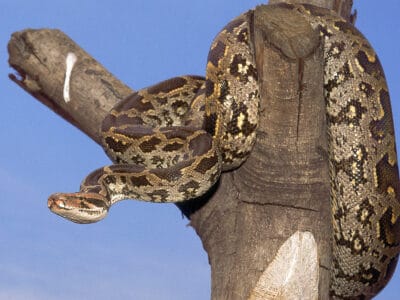
Indian python
Kaa from Rudyard Kipling's The Jungle Book was an Indian Python.
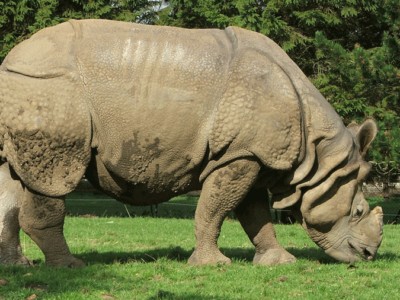
Indian Rhinoceros
Also known as the one-horned rhino!

Indian Star Tortoise
Popular in the exotic pet trade!

Insects
There are an estimated 30 million species!

Jacana
The jacana has the ability to swim underwater
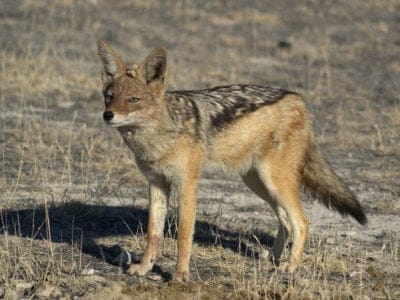
Jackal
Can maintain speeds of 16 km/h!
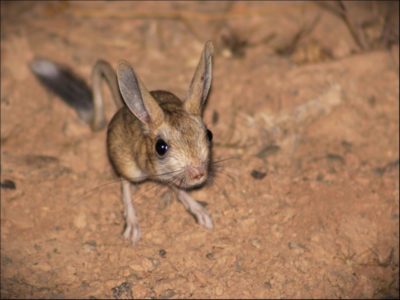
Jerboa
Tiny rodent with a kangaroo-like jump!

Jumping Spider
Some can jump 50 times the length of their bodies

Junglefowl
The term "pecking order" comes from junglefowls' hierarchies among both sexes

Kiang
The kiang, native to the Tibetan Plateau, is the largest of the wild asses!

King Cobra
They are the longest venomous snake in the world.
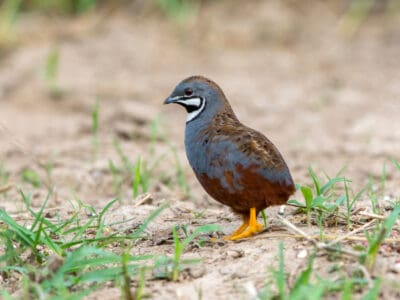
King Quail
Females look similar to males but don’t come in shades of blue

Kingfisher
Inhabits wetlands and woodlands worldwide!

Krait
A painless bite that can result in death.

Kudzu Bug
Kudzu bugs don't bite humans, but they secrete a substance that can irritate people's skin. That irritation is often confused for a bite.

Ladybug
There are more than 5,000 species worldwide!

Leech
Has 10 pairs of eyes!
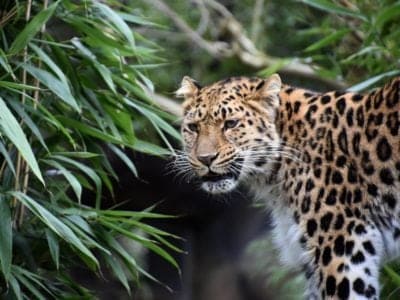
Leopard
Spends much of the time high in the trees!

Leopard Cat
There are 11 different species!

Leopard Gecko
The first ever domesticated lizard! There are now more than 100 unique color morphs thanks to selective breeding.

Liger
The offspring of a lion and tiger parents!
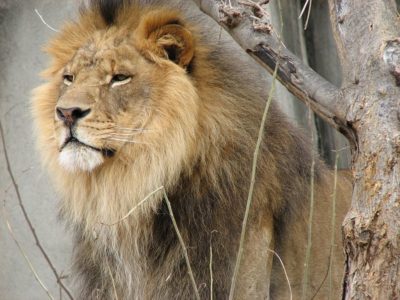
Lion
Lives in small groups called prides!

Lizard
There are around 5,000 different species!

Locust
Each locust can eat its weight in plants each day.

Long-Eared Owl
Ear tufts make it look bigger!
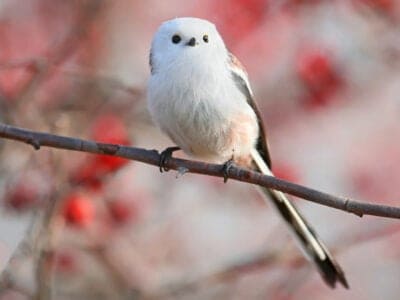
Long-Tailed Tit
Often hangs upside down while feeding!

Loris
Like all lorises, slow loris has a cute wide-eyed look, but it also has a venomous sting that can rot human flesh.

Lystrosaurus
Lystrosaurus was one of the few terrestial species that survived the permian extinction

Macaque
Macaque females will pass on their social rankings to their daughters

Magpie
They are found across Europe, Asia and Africa!
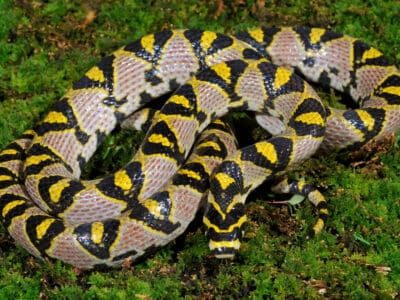
Mandarin Rat Snake
"This docile snake is a popular and long-lived pet - though challenging to care for - with a lifespan of up to 21 years!"
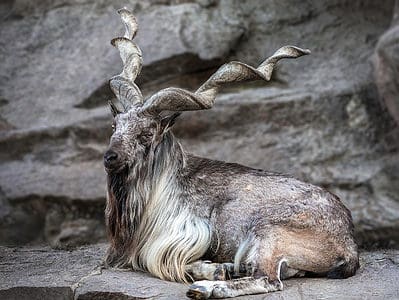
Markhor
The markhor drools a foamy substance after chewing its cud, which the local people use for extracting snake poison.

Masked Palm Civet
Found throughout Asia, India and China!

Mayfly
There are 2,500 known species worldwide!

Mealybug
They have a symbiotic relationship with ants.
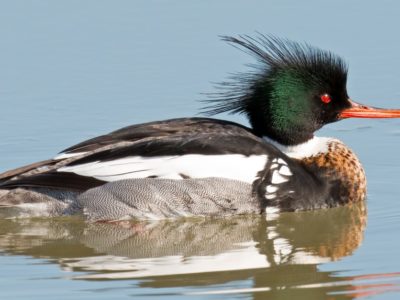
Merganser
They line their nests with their feathers

Millipede
Some species have a poisonous bite!

Mole
Primarily hunts and feeds on Earthworms!

Mole Cricket
Adult Mole crickets may fly as far as 5 miles during mating season and are active most of the year.
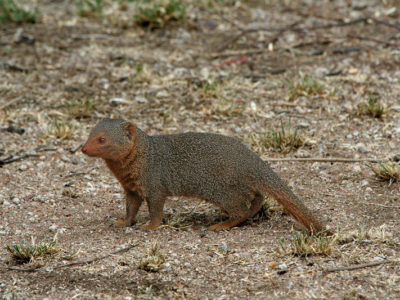
Mongoose
Range in size from just 1 to 3 foot!

Mongrel
Has characteristics of two or more breeds!

Monitor Lizard
Some species are thought to carry a weak venom!

Monkey
There are around 260 known species!
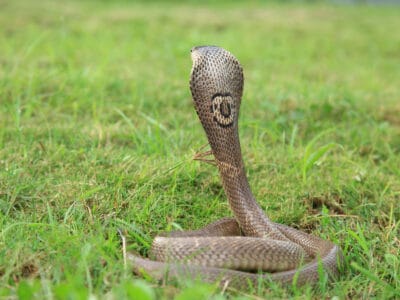
Monocled Cobra
The monocled cobra is responsible for the highest fatality rate of any snake in all of Thailand.

Moorhen
Feeds on aquatic insects and water-spiders!

Mosquito
Only the female mosquito actually sucks blood

Moth
There are 250,000 different species!

Mouse
Found on every continent on Earth!

Mule
The offspring of a horse and donkey parents!

Muntjac
The muntjac is the smallest type of deer in the world
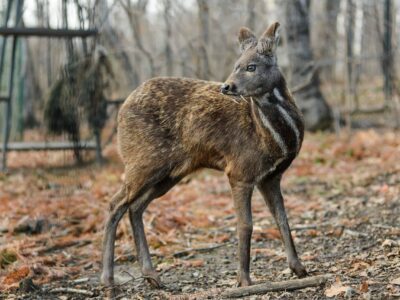
Musk Deer
The glands of a musk deer can sell for up to $45,000 on the black market.
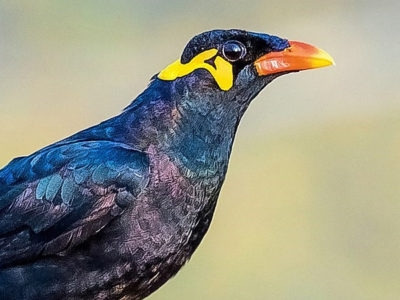
Myna Bird
Many people believe the hill myna bird is better at mimicking humans than a parrot!

Neanderthal
Roamed Asia and Europe for around 100,000 years!

Needlefish
no stomach to digest food

Nematode
Nematodes range in size from 1/10 of an inch to 28 feet long

Newt
Able to regrow lost or damaged limbs!

Nightingale
Named more than 1,000 years ago!
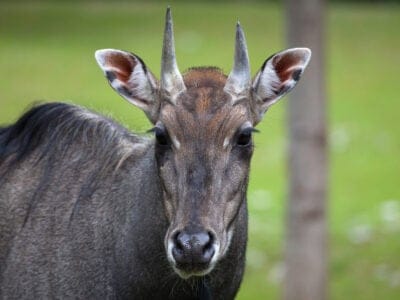
Nilgai
Nilgai were hunted for their meat as far back as 8,000 years ago.

No See Ums
There are more than 5,000 species.

Northern Pintail
Northern pintails migrate at night with speeds reaching 48 miles per hour!

Onager
An onager's coat changes color with the season.

Orb Weaver
Females are about four times the size of males

Osprey
They reuse nesting sites for 70 years!

Otter
There are 13 different species worldwide

Owl
The owl can rotate its head some 270 degrees
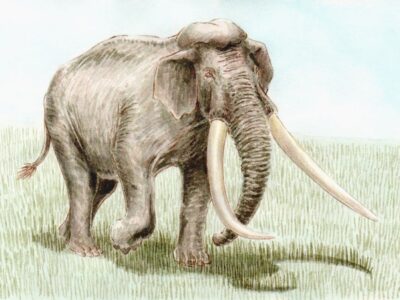
Palaeoloxodon namadicus
Palaeloxodon namadicus was the largest land mammal ever found
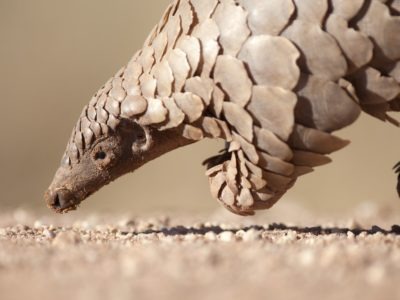
Pangolin
Bad eyesight, but great sense of smell
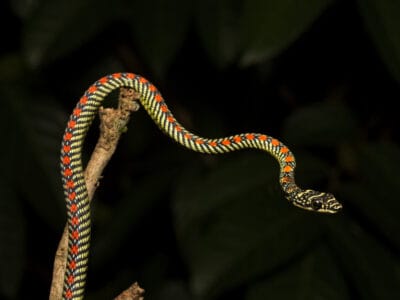
Paradise Flying Snake
Paradise Flying Snakes can glide over 100 yards!
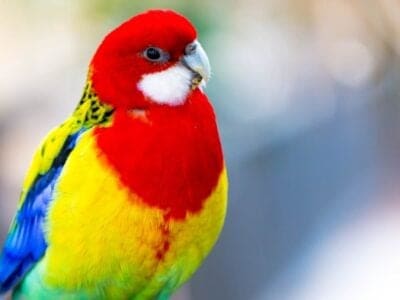
Parakeet
Monk parakeets are the only parakeets that actually build nests. They’re also the only parakeets to nest in great colonies.

Parrot
Can live for up to 100 years!
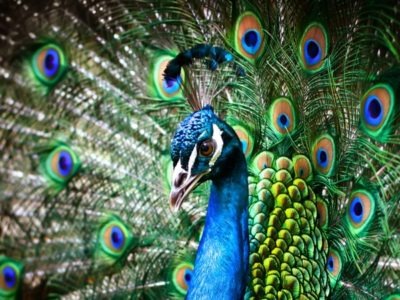
Peacock
Most commonly found on the Indian mainland!

Peregrine Falcon
Fastest animal on Earth

Pheasant
Females lay between 8 and 12 eggs per clutch!

Pheasant-tailed Jacana
The pheasant-tailed jacana is the only species in its family that migrates long distances.

Pig
Thought to have been domesticated in 9,000 BC!

Pigeon
They can find their way back to their nests from up to 1300 miles away.

Pika
Found in mountainous regions and rocky areas

Pipe Snake
Some of these snakes flatten their neck and raise their heads to imitate cobras if they’re threatened.
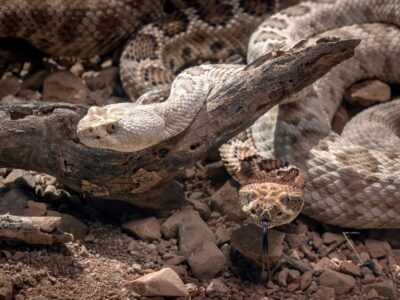
Pit Viper
Pit vipers's fangs fold up into their mouths when they don't need them.

Pompano Fish
They are bottom-feeders

Pond Skater
There are 500 different species!

Porcupine
There are 30 different species worldwide!

Praying Mantis
The mantis can turn its head 180 degrees.

Quail
Inhabits woodland and forest areas worldwide!

Rabbit
There are more than 300 different species!

Rat
Omnivores that eat anything!

Rat Snakes
Rat snakes are constrictors from the Colubridae family of snakes.
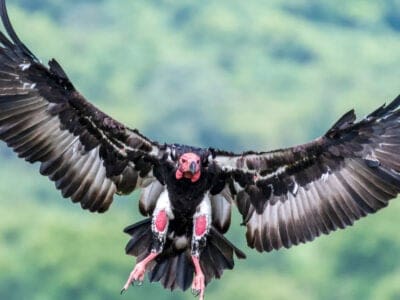
Red-Headed Vulture
Not exclusively carrion eaters, these birds are also opportunistic hunters
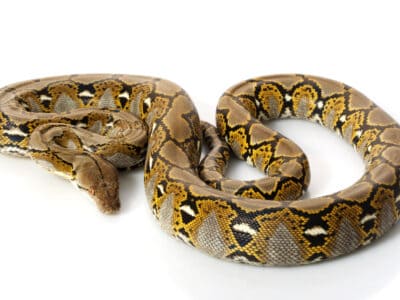
Reticulated python
These popular pets can get big enough to kill their owner.

Rhamphosuchus
Rhamphosuchus had a narrow snout with a beak-like appearance.

Rhesus Macaque
Rhesus Macaques are the most widely distributed primate in terms of geographic diversity

Rhinoceros
It's horns are made from keratin!

River Turtle
Inhabits freshwater habitats around the world!

Robin
There are more than 45 species in Australia alone!

Rodents
The capybara, the world’s largest rodent, likes to be in and around bodies of water. Because of this, the Catholic Church in South America decided that it was a fish, and people were allowed to eat it during Lent and First Fridays.

Rooster
Will mate with the entire flock!

Russel’s Viper
A Russel's viper strike is so forceful it can lift its entire body off the ground.

Sable Ferret
Ferrets were used during the Revolutionary War to keep down the rat population.

Salamander
There are more than 700 different species!
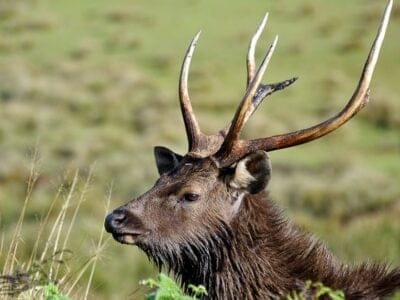
Sambar
Male sambars will compete for mates by clashing together with their antlers

Sand Crab
The sand crab burrows beneath the sand with its tail
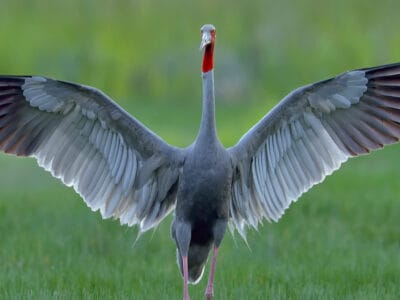
Sarus Crane
Parents use low calls to tell their chicks to freeze and lie still when danger lurks.
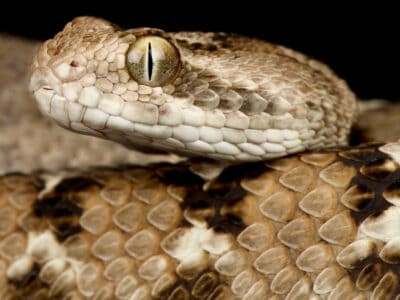
Saw-scaled Viper
This is the smallest venomous snake in India's Big Four.

Scorpion
There are around 2,000 known species!

Sea Eagle
The sea eagle tends to mate for life with a single partner

Seahorse
Males give birth to up to 1,000 offspring!

Sheep
Around 35 million in the English countryside!

Short-Eared Owl
The short-eared owl is one of the most widespread owl species in the world, covering five continents.

Shrew
The spinal column of the shrew Scutisorex somereni is so strong and reinforced that it can support the weight of an adult human.

Shrimp
There are 2,000 different species worldwide!

Siberian Ibex
There’s a population of Siberian ibex in New Mexico

Sivatherium
Sivatherium was a large giraffid and also one of the largest ruminants of all-time.

Skink Lizard
Some skinks lay eggs in some habitats while giving birth to skinklets in other habitats.

Slow Worm
Found widely throughout British gardens!

Slug
They glide around on one foot, which is aided by the slime they produce

Smokybrown Cockroach
Has up to 45 eggs per egg case

Snail
There are nearly 1,000 different species!

Snake
There are around 4,000 known species worldwide
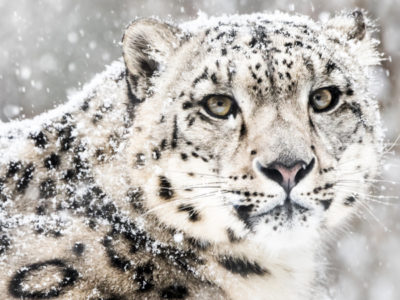
Snow Leopard
Unlike other big cats, snow leopards don’t roar.

Sparrow
There are 140 different species!

Spider Wasp
They prey on spiders to feed their larvae or they parasitize other spider wasps.

Spotted Garden Eel
Males battle each other over females and territory
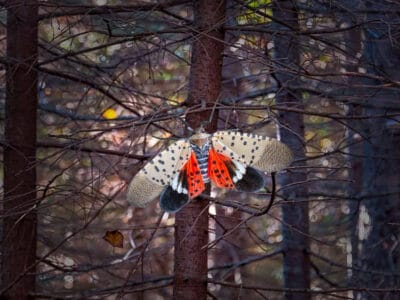
Spotted Lanternfly
The spotted lanternfly is often confused for a moth, but it’s actually a type of planthopper

Squirrel
Small rodents found in woodlands worldwide!

Stick Insect
There are more than 3,000 different species!

Stoat
Average adults weigh about 200 grams!

Stork
They can’t sing like other birds.
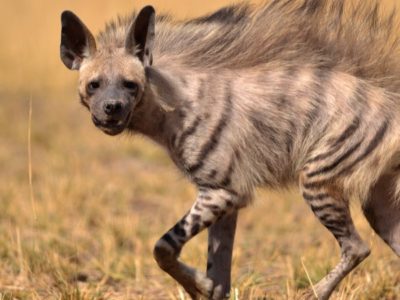
Striped Hyena
The striped hyenas usually mark their territories with the help of the scent gland secretions from their anal pouch.

Sun Bear
The smallest species of bear in the world!

Swan
Populations have been affected by pollution!
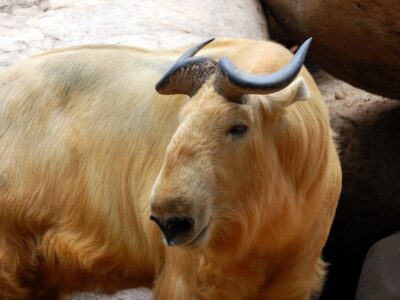
Takin
The takin can leap some 6 feet through the air

Tangerine Leopard Gecko
Unlike most geckos, tangerine leopard geckos have movable eyelids.

Tarantula Hawk
Tarantula hawks are excellent pollinators, especially for milkweed.

Termite
Their mounds can be up to 9 meters tall!

Theropod
Some theropods had feathers and may have been ancestors of modern birds.

Thrush
The American robin is called the robin because its red breast reminded European settlers of the robin back in the old country.

Tick
They inject hosts with a chemical that stops them from feeling the pain of the bite
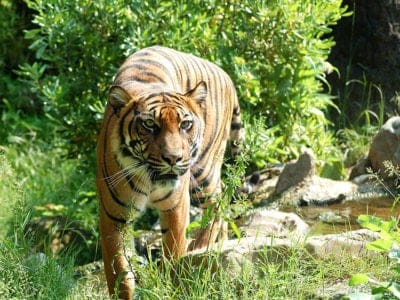
Tiger
The largest feline in the world!

Tiger Beetle
The adult tiger beetle is one of the fastest land insects in the world

Tokay Gecko
The Tokay gecko gets its onomatopoeic name from its "To-kay!" barking call.

Tortoise
Can live until they are more than 150 years old!

Tree Cricket
They make music with their wings

Tree Frog
Found in warmer jungles and forests!
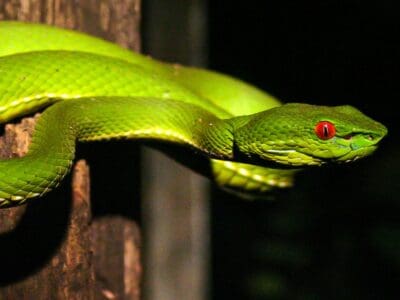
Tree Viper (Bamboo Viper)
Pit vipers can strike accurately at moving objects less than .5 degrees Farenheit warmer than the background.

Turtles
Some species of aquatic turtles can get up to 70 percent of their oxygen through their butt.
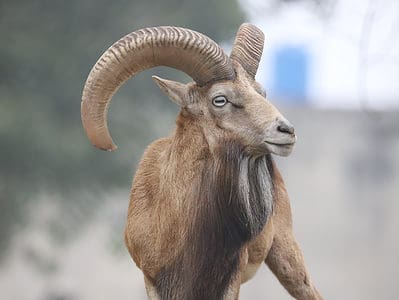
Urial
Urials are the ancestors of modern-day domesticated sheep.

Uromastyx (Spiny-Tailed Lizard)
Spiny-tailed lizards "sneeze" out salt!
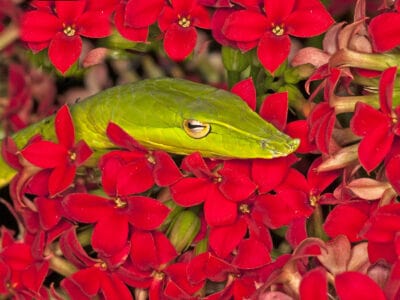
Vine Snake
A slender body and elongated snout give the vine snake a regal look.

Vinegaroon
Vinegaroons can spray 19 times before the glands are depleted

Viper
Vipers are one of the most widespread groups of snakes and inhabit most

Vulture
There are 30 different species worldwide!
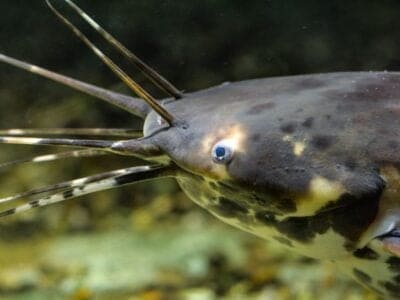
Walking Catfish
The walking catfish can move on land while breathing air
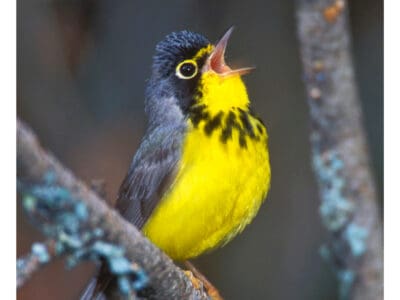
Warbler
Warblers are so called because of the trills of their song.

Wasp
There are around 75,000 recognised species!

Water Buffalo
Has been domesticated for thousands of years!
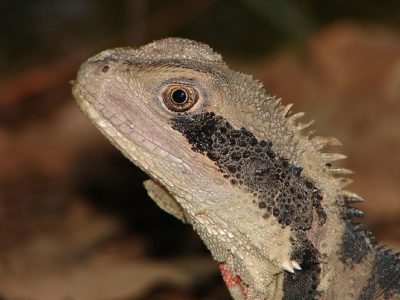
Water Dragon
Spends most of it's time in the trees!

Weasel
The smallest carnivorous mammal in the world!

White Ferret / Albino Ferrets
There are two different types of white ferrets!
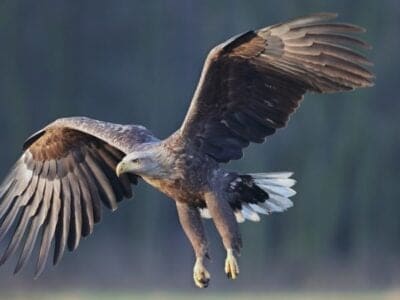
White-Tailed Eagle
It is one of the biggest birds of prey.

White Tiger
None have been seen in the wild for 50 years!
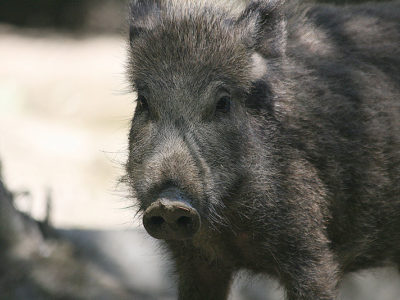
Wild Boar
Males have a top tusk to sharpen the bottom one!

Wolf
Thought to date back more than 300,000 years!

Wolf Spider
Carnivorous arachnid that hunts its prey.

Woodlouse
This animal can roll up into a ball

Woodlouse Spider
Unlike most spiders, woodlouse spiders don’t build a web.

Woodpecker
There are 200 different species!

Worm
Doesn’t have eyes.

Wryneck
They feign death by making their bodies limp and closing their eyes.

Xenacanthus
Smal eel-like ancient shark

Yellow Crazy Ant
One of the top 100 worst invasive species!
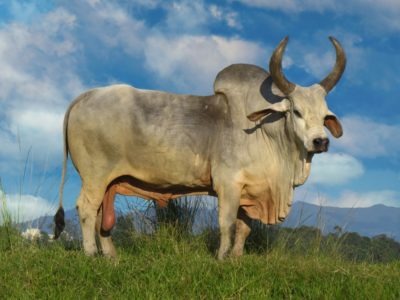
Zebu
There are around 75 different species!
Indian Animals List
- Adélie Penguin
- Admiral Butterfly
- Angora Goat
- Ant
- Antelope
- Archerfish
- Armyworm
- Asian Elephant
- Asian Giant Hornet
- Asian Palm Civet
- Asiatic Black Bear
- Atlas Moth
- Aurochs
- Avocet
- Bamboo Rat
- Banana Spider
- Banded Krait
- Barb
- Barn Owl
- Barn Swallow
- Bat
- Baya
- Bear
- Beauty rat snake
- Bed Bugs
- Bee
- Bee-Eater
- Beetle
- Beewolf wasp
- Bengal Tiger
- Binturong
- Bird
- Biscuit Beetle
- Black Widow Spider
- Blind Snake
- Blue Dragon Sea Slug
- Boiga
- Brahminy Blindsnake
- Brazilian Treehopper
- Bronze-winged Jacana
- Brown Dog Tick
- Bumblebee
- Burmese Python
- Butterfly
- Caecilian
- Camel
- Camel Cricket
- Caracal
- Carpenter Ant
- Carpet Viper
- Cashmere Goat
- Cat
- Caterpillar
- Catfish
- Centipede
- Chameleon
- Chicken
- Cicada
- Cinereous Vulture
- Clouded Leopard
- Cockroach
- Coconut Crab
- Codling Moth
- Common Buzzard
- Common Furniture Beetle
- Common Green Magpie
- Common House Spider
- Common Raven
- Coral Snake
- Cormorant
- Cosmic Caterpillar
- Cow
- Cow Reticulated Python
- Crab
- Crab Spider
- Crane
- Cricket
- Crocodile
- Crocodylomorph
- Crow
- Cuckoo
- Danios
- Deer
- Desert Locust
- Dhole
- Dickinsonia
- Dog
- Dog Tick
- Donkey
- Dormouse
- Draco Volans Lizard
- Dragonfly
- Duck
- Dung Beetle
- Dwarf Gourami
- Eagle
- Earthworm
- Earwig
- Eel
- Egyptian Vulture
- Elephant
- Eurasian Eagle-owl
- Eurasian Wolf
- European Goldfinch
- Falcon
- False Widow Spider
- Fiddler Crab
- Fire-Bellied Toad
- Firefly
- Fishing Cat
- Flamingo
- Flea
- Flowerhorn Fish
- Fly
- Flying Snake
- Flying Squirrel
- Fox
- Frog
- Fruit Bat
- Fruit Fly
- Fulvous Whistling Duck
- Gadwall
- Gazelle
- Gecko
- Gerbil
- German Cockroach
- Gharial
- Giant Trevally
- Gibbon
- Glass Lizard
- Glowworm
- Gnat
- Goat
- Golden Eagle
- Golden Oriole
- Goonch Catfish
- Goose
- Gooty Sapphire Tarantula
- Grasshopper
- Green Bee-Eater
- Grey Heron
- Griffon Vulture
- Gypsy Moth
- Hamster
- Hare
- Hawk Moth Caterpillar
- Hedgehog
- Heron
- Honey Badger
- Honey Bee
- Hoopoe
- Hornbill
- Horse
- Horsefly
- Horseshoe Crab
- Housefly
- Human
- Huntsman Spider
- Hyena
- Ibis
- Indian Cobra
- Indian Elephant
- Indian Giant Squirrel
- Indian Palm Squirrel
- Indian python
- Indian Rhinoceros
- Indian Star Tortoise
- Insects
- Jacana
- Jackal
- Jerboa
- Jumping Spider
- Junglefowl
- Kiang
- King Cobra
- King Quail
- Kingfisher
- Krait
- Kudzu Bug
- Ladybug
- Leech
- Leopard
- Leopard Cat
- Leopard Gecko
- Liger
- Lion
- Lizard
- Locust
- Long-Eared Owl
- Long-Tailed Tit
- Loris
- Lystrosaurus
- Macaque
- Magpie
- Mandarin Rat Snake
- Markhor
- Masked Palm Civet
- Mayfly
- Mealybug
- Megalochelys
- Merganser
- Millipede
- Mole
- Mole Cricket
- Mongoose
- Mongrel
- Monitor Lizard
- Monkey
- Monocled Cobra
- Moorhen
- Mosquito
- Moth
- Mourning Gecko
- Mouse
- Mule
- Muntjac
- Musk Deer
- Myna Bird
- Neanderthal
- Needlefish
- Nematode
- Newt
- Nightingale
- Nilgai
- No See Ums
- Northern Pintail
- Onager
- Orb Weaver
- Osprey
- Otter
- Owl
- Ox
- Palaeoloxodon namadicus
- Pangolin
- Paradise Flying Snake
- Parakeet
- Parrot
- Pea Puffer
- Peacock
- Peregrine Falcon
- Pheasant
- Pheasant-tailed Jacana
- Phytosaurs
- Pig
- Pigeon
- Pika
- Pipe Snake
- Pit Viper
- Pompano Fish
- Pond Skater
- Porcupine
- Praying Mantis
- Quail
- Rabbit
- Rat
- Rat Snakes
- Red-Headed Vulture
- Reticulated python
- Rhamphosuchus
- Rhesus Macaque
- Rhinoceros
- River Turtle
- Robin
- Rodents
- Rooster
- Russel’s Viper
- Sable Ferret
- Salamander
- Sambar
- Sand Crab
- Sarus Crane
- Saw-scaled Viper
- Scorpion
- Sea Eagle
- Seahorse
- Sheep
- Short-Eared Owl
- Shrew
- Shrimp
- Siberian Ibex
- Sivatherium
- Skink Lizard
- Slow Worm
- Slug
- Smokybrown Cockroach
- Snail
- Snake
- Snow Leopard
- Sparrow
- Spider Wasp
- Spotted Garden Eel
- Spotted Lanternfly
- Squirrel
- Stick Insect
- Stoat
- Stork
- Striped Hyena
- Sun Bear
- Swallowtail Butterfly
- Swan
- Takin
- Tangerine Leopard Gecko
- Tarantula Hawk
- Termite
- Theropod
- Thrush
- Tick
- Tiger
- Tiger Beetle
- Tokay Gecko
- Tortoise
- Tree Cricket
- Tree Frog
- Tree Viper (Bamboo Viper)
- Turtles
- Urial
- Uromastyx (Spiny-Tailed Lizard)
- Vine Snake
- Vinegaroon
- Viper
- Vulture
- Walking Catfish
- Warbler
- Wasp
- Water Buffalo
- Water Dragon
- Weasel
- White Ferret / Albino Ferrets
- White-Tailed Eagle
- White Tiger
- Wild Boar
- Wolf
- Wolf Spider
- Woodlouse
- Woodlouse Spider
- Woodpecker
- Worm
- Wryneck
- Xenacanthus
- Yellow Crazy Ant
- Zebu
India FAQs (Frequently Asked Questions)
Which animals are found in India?
India is particularly rich in deer and other hoofed animals, big cats, snakes, bats, monkeys, rodents, birds, insects, and freshwater fish.
What are the main animals in India?
The most well-known animals are perhaps the tiger, elephant, rhino, lion, peacock, snow leopard, and monkeys.
How many animals are in India?
India has approximately 2,500 species of fish, 200 amphibians, 400 reptiles, 400 mammals, and some 1,250 species of birds.
Which animal is banned in India?
India does ban people from owning or importing certain animals, including some species of monkeys, parakeets, parrots, tortoises, penguins, otters, manatees, and cetaceans.



